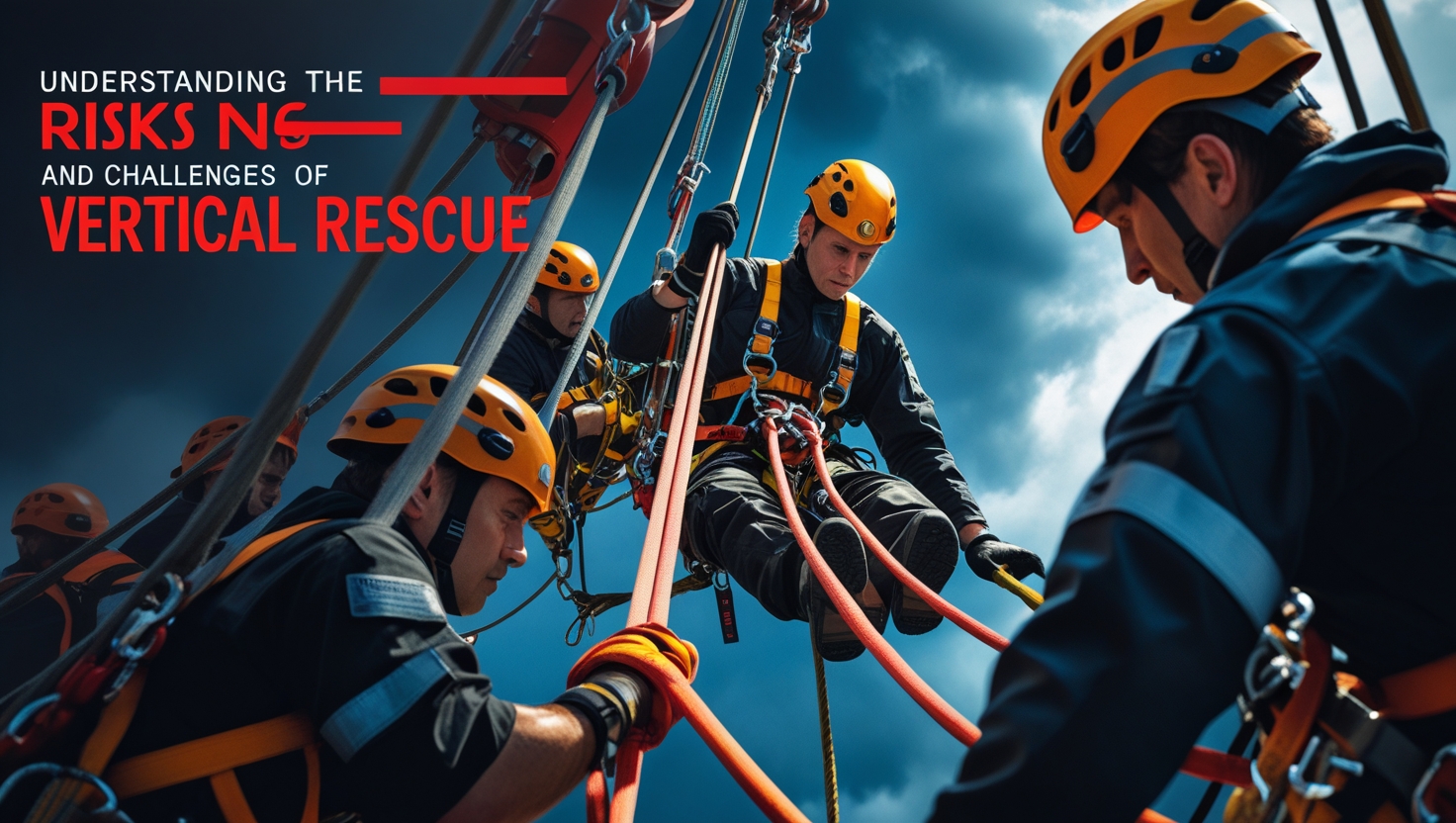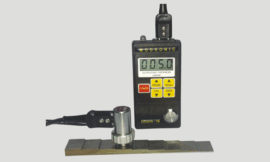Vertical rescue is a highly specialized field of emergency response that involves the retrieval and evacuation of individuals from difficult and hazardous environments, such as cliffs, high-rise buildings, caves, and industrial structures.
This type of rescue operation demands advanced technical skills, rigorous training, and the use of specialized equipment. While vertical rescue is crucial in life-threatening situations, it comes with significant risks and challenges. This blog explores the inherent dangers and difficulties associated with vertical rescue and provides insights into how they can be mitigated.
The Nature of Vertical Rescue
Vertical rescue operations typically occur in environments where standard rescue techniques are insufficient. These situations include:
- High-rise building rescues
- Cliff and mountain rescues
- Industrial accidents involving confined spaces
- Cave rescues
- Urban search and rescue operations (collapsed structures)
Each scenario presents unique obstacles that require specialized knowledge and coordination among rescue teams.
Risks Involved in Vertical Rescue
1. Falls and Equipment Failure
One of the primary risks in vertical rescue is falling from significant heights due to equipment failure, human error, or environmental factors. Even with high-quality ropes, harnesses, and anchor points, equipment failure can occur due to wear and tear, improper use, or environmental degradation.
Mitigation Strategies:
- Regular inspection and maintenance of equipment
- Proper training in the use of gear
- Use of backup safety systems such as secondary ropes and belay devices
2. Environmental Hazards
Rescue operations in extreme environments expose personnel to harsh weather conditions, unstable surfaces, and falling debris. Mountainous terrain, caves, and high-rise buildings all pose unique environmental challenges.
Mitigation Strategies:
- Conducting thorough site assessments before beginning rescue operations
- Wearing protective gear, including helmets, gloves, and weather-appropriate clothing
- Utilizing drones and other technologies to assess risks from a distance
3. Physical and Mental Strain
Vertical rescues are physically demanding, requiring rescuers to carry heavy equipment, navigate challenging terrain, and work at great heights. Mental fatigue can also be a significant factor, especially during prolonged rescue missions.
Mitigation Strategies:
- Regular physical fitness training for rescuers
- Implementation of rotational shifts during long operations
- Psychological support and stress management training for rescue personnel
4. Limited Accessibility and Communication Barriers
In many vertical rescue scenarios, reaching the victim is challenging due to geographical constraints or confined spaces. Additionally, communication between team members can be hindered by environmental factors such as noise, distance, or structural obstructions.
Mitigation Strategies:
- Using high-quality communication devices, such as two-way radios or hands-free headsets
- Developing detailed rescue plans that include contingency strategies for communication failures
- Deploying drones or remote cameras to assist in situational awareness
5. Rescuer Safety and Secondary Accidents
During a vertical rescue, the safety of the rescuer is as crucial as the safety of the victim. Any mistake or miscalculation can result in secondary accidents, endangering multiple lives.
Mitigation Strategies:
- Strict adherence to safety protocols
- Conducting comprehensive risk assessments before executing rescue maneuvers
- Ensuring proper teamwork and coordination through regular training drills
Challenges Faced in Vertical Rescue
1. Technical Expertise and Training
Vertical rescue requires extensive training in rope access techniques, anchoring systems, patient packaging, and evacuation procedures. Rescuers must undergo continuous education and drills to stay proficient.
Training Components:
- Rope rescue techniques (rappelling, ascending, and hauling systems)
- High-angle rescue procedures
- First aid and medical response training
- Crisis management and decision-making under pressure
2. Time-Sensitive Operations
Rescue situations often demand quick action to prevent further injury or loss of life. However, rushing a rescue can lead to errors and accidents.
Balancing Speed and Safety:
- Prioritizing thorough planning and strategic execution
- Deploying trained teams with well-defined roles
- Utilizing pre-established rescue plans to minimize delays
3. Adverse Weather Conditions
Rescue operations frequently take place in unpredictable weather conditions, such as high winds, heavy rain, or extreme cold, which can compromise safety and effectiveness.
Strategies for Handling Adverse Conditions:
- Monitoring weather forecasts before and during operations
- Equipping teams with weather-resistant gear and tools
- Establishing alternative rescue strategies for severe weather scenarios
4. Limited Resources and Budget Constraints
Many rescue organizations operate on limited budgets, which can restrict access to high-end equipment and specialized training.
Addressing Resource Limitations:
- Seeking funding and sponsorships from governmental and non-governmental organizations
- Collaborating with other emergency response teams to share resources
- Conducting cost-effective training programs that maximize available assets
5. Coordination Among Multiple Agencies
Large-scale rescues often require the collaboration of different agencies, including fire departments, paramedics, and law enforcement. Lack of coordination can lead to confusion and inefficiency.
Enhancing Inter-Agency Cooperation:
- Conducting joint training exercises with multiple agencies
- Establishing clear communication protocols and command structures
- Creating standardized procedures for inter-agency operations
The Role of Technology in Vertical Rescue
Technology plays a vital role in enhancing the safety and efficiency of vertical rescue operations. Some technological advancements include:
- Drones for aerial assessment and victim location
- Advanced rope systems with improved durability and safety features
- Wearable communication devices for hands-free operation
- Thermal imaging cameras to detect victims in low-visibility conditions
Conclusion
Vertical rescue is an essential yet highly demanding field that presents numerous risks and challenges. From technical expertise and environmental hazards to equipment failures and coordination difficulties, rescuers must navigate a complex set of obstacles to ensure successful operations. By prioritizing training, investing in quality equipment, and leveraging technology, rescue teams can enhance their efficiency and safety.
Understanding the complexities of vertical rescue not only underscores the importance of preparedness but also highlights the incredible dedication and bravery of those who risk their lives to save others. For individuals and organizations involved in this field, continuous learning and adaptation remain key to overcoming the ever-evolving challenges of vertical rescue.
FAQ :
1: What are the primary risks associated with vertical rescue operations?
Vertical rescue operations come with several inherent risks, including falls from height, equipment failure, and environmental hazards such as unstable surfaces or adverse weather conditions. Falls are particularly concerning as they can lead to serious injuries or fatalities. Equipment failures, such as rope malfunctions or harness issues, can also pose significant risks. Additionally, rescuers must be aware of environmental factors like strong winds or rain, which can make the rescue more dangerous.
2: How can rescue teams prepare for potential challenges during a vertical rescue?
Preparation is key in vertical rescue operations. Teams can conduct thorough training exercises that simulate various scenarios they might encounter. Practicing with equipment, understanding rescue techniques, and developing effective communication strategies are essential. Additionally, teams should conduct site assessments prior to operations to identify potential hazards and develop contingency plans that address these challenges.
3: What role does teamwork play in mitigating risks during vertical rescue?
Teamwork is crucial in vertical rescue operations. A well-coordinated team can ensure that tasks are completed efficiently and safely. Effective communication among team members allows for real-time updates on the situation, which is vital for making informed decisions. Furthermore, team members can look out for each other and provide assistance if someone faces difficulties, reducing the likelihood of accidents and improving overall safety.
4: Are there specific safety measures that should be implemented during a vertical rescue?
Yes, there are several safety measures that should be in place during vertical rescues. These include using proper personal protective equipment (PPE), such as helmets and harnesses, performing regular equipment checks to ensure reliability, and maintaining clear communication protocols. Additionally, establishing a safety plan that outlines roles, procedures, and emergency contacts can help ensure that everyone knows what to do in case of an incident.
5: How can understanding the psychological challenges enhance the effectiveness of vertical rescue teams?
Understanding the psychological challenges faced by both rescuers and victims can significantly improve the effectiveness of vertical rescue operations. Rescuers may experience stress, anxiety, or decision fatigue while navigating complex scenarios. Awareness of these dynamics allows for the implementation of support systems, such as peer debriefing or counseling services. For victims, acknowledging their psychological state can lead to better communication and reassurance, ultimately leading to a smoother rescue process and improved outcomes.



